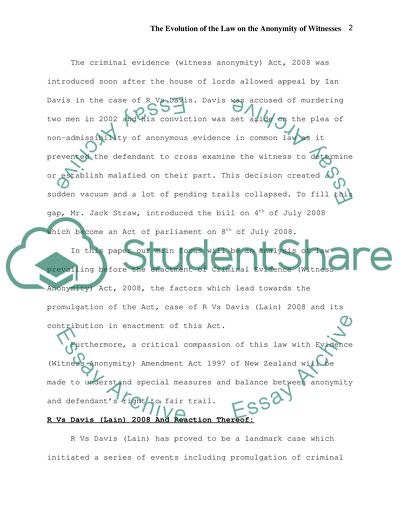Cite this document
(“The evolution of the law on the anonymity of witnesses: the Essay”, n.d.)
Retrieved from https://studentshare.org/miscellaneous/1561103-the-evolution-of-the-law-on-the-anonymity-of-witnesses-the-governments-provisions-fail-to-provide-a-balance-with-anonymity-and-a-defendants-rights
Retrieved from https://studentshare.org/miscellaneous/1561103-the-evolution-of-the-law-on-the-anonymity-of-witnesses-the-governments-provisions-fail-to-provide-a-balance-with-anonymity-and-a-defendants-rights
(The Evolution of the Law on the Anonymity of Witnesses: The Essay)
https://studentshare.org/miscellaneous/1561103-the-evolution-of-the-law-on-the-anonymity-of-witnesses-the-governments-provisions-fail-to-provide-a-balance-with-anonymity-and-a-defendants-rights.
https://studentshare.org/miscellaneous/1561103-the-evolution-of-the-law-on-the-anonymity-of-witnesses-the-governments-provisions-fail-to-provide-a-balance-with-anonymity-and-a-defendants-rights.
“The Evolution of the Law on the Anonymity of Witnesses: The Essay”, n.d. https://studentshare.org/miscellaneous/1561103-the-evolution-of-the-law-on-the-anonymity-of-witnesses-the-governments-provisions-fail-to-provide-a-balance-with-anonymity-and-a-defendants-rights.


